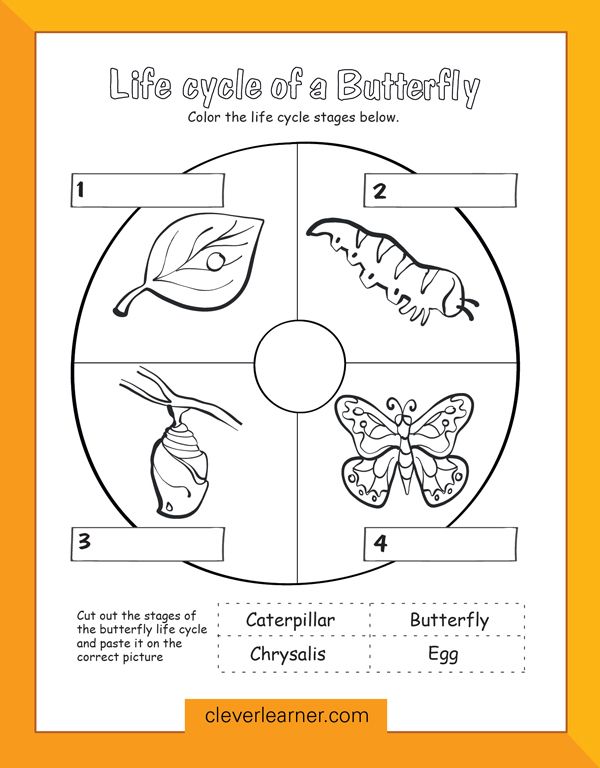Baby cells in food
No, food products don’t contain fetal tissue
By ALI SWENSONJanuary 25, 2023 GMT
CLAIM: Flavor enhancers made from aborted fetal tissue are being added to food products without consumers’ knowledge.
AP’S ASSESSMENT: False. Biotechnology companies have frequently used fetal cell lines in their research and testing, but flavor enhancers used in food products do not contain any tissue from aborted fetuses. The Food and Drug Administration said in a statement that it would not approve any food containing fetal tissue for human consumption and is not aware of this ever happening.
THE FACTS: A years-old misconception about the use of fetal cell lines in research has resurfaced online in recent months with the false claim that food manufacturers give customers products made from fetal tissue.
“Flavour enhancers made from aborted fetal tissue are being eaten without the knowledge of consumers,” read one tweet shared thousands of times. “Amounts of these flavour enhancers used in food products are below a certain threshold, so they don’t need to be reported or safety-tested by the FDA. ”
The claim, which also circulated on Instagram with the misleading caption “aborted babies in your food,” was further amplified when a Texas state senator this month introduced a bill calling for the labeling of foods containing “aborted human fetal tissue.”
But there is no basis for such claims, according to the FDA, which said in an emailed statement that it would not condone this and was “not aware of any company ever putting fetal cells into food products.”
“There are no conditions under which the FDA would consider human fetal tissue to be safe or legal for human or animal consumption,” the statement read. The agency added that because it is not aware of any example of this ever happening, it has never taken enforcement action for this violation.
The false claim originates from the fact that many biotechnology companies, including some in the food industry, have used fetal cell lines in a research and testing capacity. Cell lines, which are key to medical research, are cloned copies of cells from the same source that have been adapted to grow continuously in labs. They are very commonly used in pharmaceutical research and vaccine development.
They are very commonly used in pharmaceutical research and vaccine development.
For years, people have criticized and misrepresented the fact that the biotechnology company Senomyx used the HEK293 cell line — or Human Embryonic Kidney 293 — in research involving flavor development. The HEK293 cell line was first established in the early 1970s using cells from a kidney of a fetus.
However, numerous news reports over the years have clarified that the company didn’t put fetal cells into any food products given to consumers.
Senomyx was acquired in 2018 by the Swiss company Firmenich, which did not respond to multiple emailed requests for comment. But as a Senomyx official explained in a 2011 interview with Miami New Times, the company used the cell lines in “basically a robotic tasting system” that isolated human taste receptors in the form of proteins to test out how they reacted to flavors. If a protein reacted positively to a flavor, the company would move on to further taste tests.
Frank Graham, a professor emeritus in the departments of biology and pathology and molecular medicine at McMaster University, developed the HEK-293 cell line in the 1970s. He told The Associated Press via email that the cells “would be used in tests for various properties of compounds to be used as flavor enhancers” but “would not themselves be incorporated into beverages or other foods.”
“That would make no sense,” Graham said. “To the best of my knowledge the cells are only being used for in vitro testing of various chemicals and compounds.”
Dr. David Gorski, a surgical oncologist and managing editor of the website Science-Based Medicine, has written about misconceptions around fetal cell lines. He confirmed in an email to the AP that fetal cell line research “does not involve actual fetal tissue.”
“It uses cell lines isolated from fetuses, often decades ago,” Gorski wrote.
___
This is part of AP’s effort to address widely shared misinformation, including work with outside companies and organizations to add factual context to misleading content that is circulating online. Learn more about fact-checking at AP.
Learn more about fact-checking at AP.
Fact Check-Food products do not contain human fetal cells
By Reuters Fact Check
7 Min Read
There is no evidence that food products contain cells from aborted human fetuses as flavor enhancers, contrary to a social media claim that revives a related, previously-debunked charge about cells used in biomedical research.
A widely-shared tweet claims that “flavor enhancers made from aborted fetal tissue are being eaten without the knowledge of consumers. Amounts of these flavor enhancers used in food products are below a certain threshold, so they don't need to be reported or safety-tested by the FDA” (here).
The post had received more than 10,000 “likes” and been retweeted over 4,000 times at the time of writing. Additional examples can be found on Facebook (bit.ly/3urNbTN), (bit.ly/3Bdojms).
The claims offer no evidence that food companies incorporate human cells into their products for any reason, but they include a screenshot of text invoking an older claim that a fetal cell line used in many kinds of laboratory research had ended up in soft drinks. That cell line, HEK-293, has been used in laboratory research related to testing food flavors, according to a 2002 study and a 2008 patent application, but that research did not involve incorporating the cells into foods.
That cell line, HEK-293, has been used in laboratory research related to testing food flavors, according to a 2002 study and a 2008 patent application, but that research did not involve incorporating the cells into foods.
COLA CLAIMS
The text in the screenshot, which is dated 2015, reads: “A biotechnology company out of California called Senomyx specializes in the development of food flavorings using aborted embryonic cells for the production of food chemicals. Research by Senomyx into the use of ‘HEK-293’ aborted human fetal cells as a flavor enhancer was published in Pubmed in 2002, after which several patents were filed by them. Additionally, this company has partnered with numerous major processed food manufacturers including Kraft, PepsiCo, and Nestle.”
The graphic image and title in this screenshot date back to at least January 2012, when they appeared in an article on the Gawker website (here).
Confusion and controversy over use of a cell line known as HEK-293 in food-related research date back even further, to at least 2011, when it was the basis of calls to ban certain types of research (here) and to boycott companies that used the HEK-293 cell line in their research and development.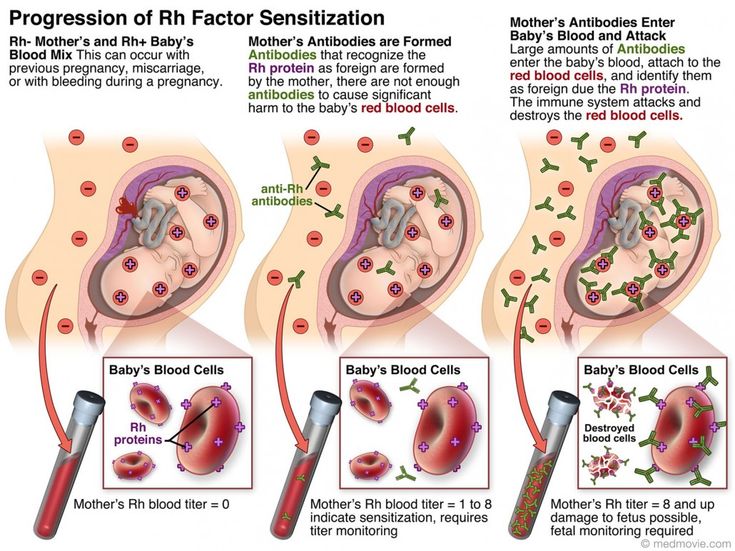
Reuters previously factchecked false claims that PepsiCo drinks contained aborted fetal cells. The claims had originated in a 2011 call from a U.S.-based anti-abortion group, Children of God for Life, to boycott companies partnered with U.S. biotech Senomyx, which was said to be using “aborted fetal cell lines to test their products” (here).
AN OLD CELL LINE
The controversial cell line is derived from fetal cells dating to the 1970s. The HEK-293 cell line was originally created sometime around 1973 or 1974 by Canadian scientist Frank Graham (here). Graham used a lab technique to “transform” cultured cells for use in cancer research. He had started with cultured kidney cells obtained in 1972 by Dutch researcher Alexander Van der Eb, who explained the cells’ origin in a 2001 presentation to the U.S. Food and Drug Administration (on page 77 here). Van der Eb has attested that the cells were derived from human fetal tissue, though he was uncertain if it was from an abortion or miscarriage (ipscell. com/2021/12/293-cells/).
com/2021/12/293-cells/).
HEK-293 cells are used widely in biomedical research, including in studies of cell mechanisms (here). In 2002, Senomyx researchers published a study in the journal Proceedings of the National Academy of Sciences that used the cells to study receptor proteins that detect certain tastes (here ). Google Patents shows that Senomyx had a patent issued in 2008 for “Recombinant Methods for Expressing a Functional Sweet Taste Receptor” that mentions the use of HEK-293 cells (here).
A 2011 CBS News report about the Pepsi allegations suggested that the Senomyx patent was most likely being used to test substances, but that no HEK cells were in finished products: “The company appears to be engineering HEK cells to function like the taste-receptor cells we have in our mouth. This way, Senomyx can test millions of substances to see if they work as different types of taste enhancers without subjecting human volunteers to endless taste tests.” (here).
In 2018, Senomyx was acquired by Firmenich, a global manufacturer of fragrances and flavors (here).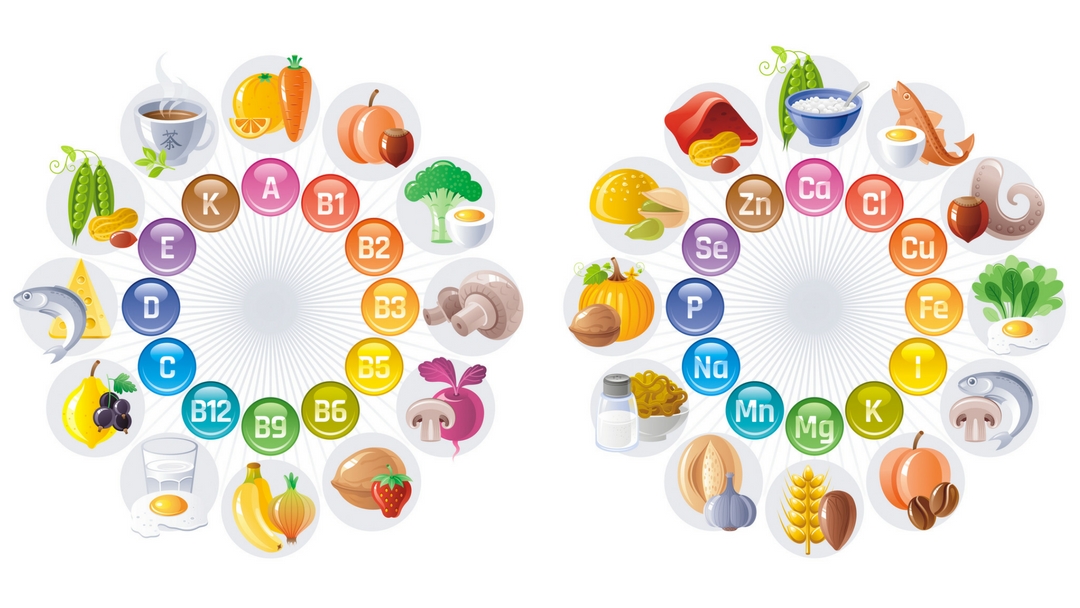
Andrea Duarte, a spokesperson for Firmenich, told Reuters by email, “Neither Firmenich products nor Senomyx products have ever contained any human cell or material.”
A Nestlé spokesperson said via email that Firmenich is a supplier to Nestlé, but that Nestlé does not use any flavor compounds using HEK cells, nor use HEK cells in their research.
Andrea Foote, a spokesperson for PepsiCo said, “While PepsiCo previously partnered with Senomyx on sweetener research, the relationship has concluded, and we do not use any Senomyx ingredients in our products. PepsiCo absolutely does not conduct or fund research that utilizes any human tissue or cell lines derived from embryos or fetuses.”
Kraft did not respond to a request for comment.
VERDICT
False. There is no evidence that any food or beverage products contain cells from human fetuses or derived from fetuses.
This article was produced by the Reuters Fact Check team. Read more about our work to fact-check social media posts here.
Embryonic cells are everywhere: what's wrong with modern cell technology
The issue of the ethics of vaccines and the use of cells from previously aborted children in their development has stirred up with renewed vigor. Around the world, Christians and members of the pro-life communities are debating whether it is right to be vaccinated with such drugs during a pandemic.
We decided to look into the situation in detail, and at the same time find out what prevents scientists from completely abandoning embryonic cell lines in medicine.
"Growing at a colossal rate": what are cell cultures and cell lines Cultivation of cells in containers. Photo from biomedstem.ru
In connection with the development of vaccines, the terms “cell culture” and “cell line” are used.
A “cell culture” is cells from a single tissue (such as skin or kidney tissue) from a human or animal that is grown in laboratories under controlled conditions.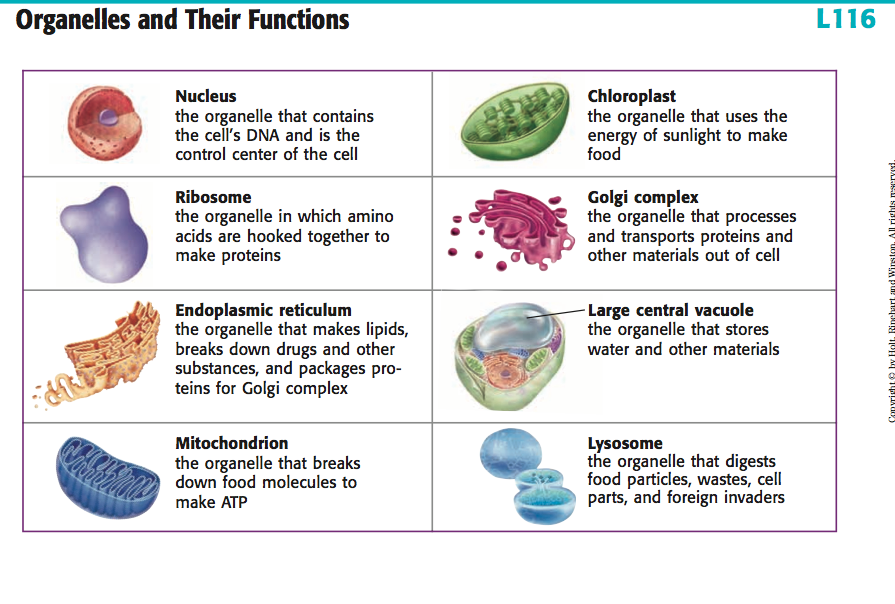 A “cell line” is a source of cell culture. As a rule, the line has a name in the form of an abbreviation of letters of the Latin alphabet and numbers - they can be used to determine when and where the cells were taken from.
A “cell line” is a source of cell culture. As a rule, the line has a name in the form of an abbreviation of letters of the Latin alphabet and numbers - they can be used to determine when and where the cells were taken from.
There are dozens of lines (human and animal), they have certain international designations and are stored in special cell banks. There is such a bank in Russia - it is the so-called All-Union Collection of Cell Cultures, the samples of which are dispersed among various scientific institutes.
There are far fewer cell lines obtained as a result of abortions, or so-called embryonic lines, in the world.
Mostly known HEK-293 (obtained from the kidneys of an embryo aborted at 1972), PER.C6 (obtained in 1985 from cells of the retina of an 18-week-old embryo), WI-38 (obtained in 1964 from diploid cells of the lung connective tissue of an aborted girl who was about 12 weeks old), MRC-5 (obtained in 1966 from the lung cells of a 14-week-old boy), RA27/3 (obtained in the USA in 1964 from a fetus infected with rubella) and several others.
At the same time, each of these lines has its own "specialization" and its own unique properties. So, the rubella vaccine, HEK-29, is still being grown on the RA27 / 3 line.3 is notorious for being used by Senomyx to test nutritional supplements.
The PER.C6 line is owned by Johnson & Johnson and has the unique property that the cells of the line grow at an enormous rate: one milliliter of suspension can contain up to one hundred million cells. There are also “universal” lines, for example, about 10 vaccines against various diseases are being developed at MRC-5.
Fetal lines in the food industry: how is it?
The use of embryonic cell lines in the food industry has a history. Senomyx was founded in 1999 by Libert Strier, an American biochemist at Stanford University. Her goal was to research in the field of food additives that enhance the taste and smell of food.
The unique substances that the chemists at Senomyx were developing could not only make the original product sweeter or saltier, but also, for example, block bitterness.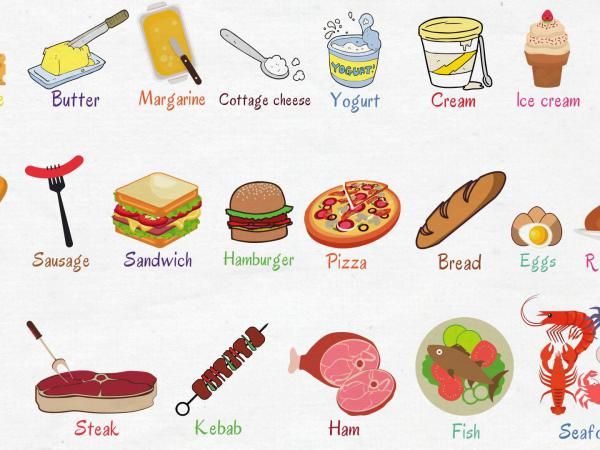 Tested nutritional supplements on the HEK29 embryonic cell line3 - It was cheaper than giving samples to volunteers or doing elaborate experiments on animals that couldn't communicate how they felt.
Tested nutritional supplements on the HEK29 embryonic cell line3 - It was cheaper than giving samples to volunteers or doing elaborate experiments on animals that couldn't communicate how they felt.
Special cell lines cultured from oral cavity receptor cells could serve as an alternative to abortive materials, but this technology was more complicated, and in the end it was decided to follow a simple and, most importantly, cheap path. At the same time, HEK293 cells were used only at the testing stage; they did not get into the final product. In total, Senomyx has 113 patents, several hundred different flavors, as well as cooperation with at least seven of the world's largest companies, such as Heinz, Nestle, Pepsi and others.
In 2010, thanks to the American pro-life organization God's Children, information that the flavorings that are used in ketchups, chips, instant cubes and soups, cream, chocolate, carbonated drinks, are produced using unethical technology became widespread.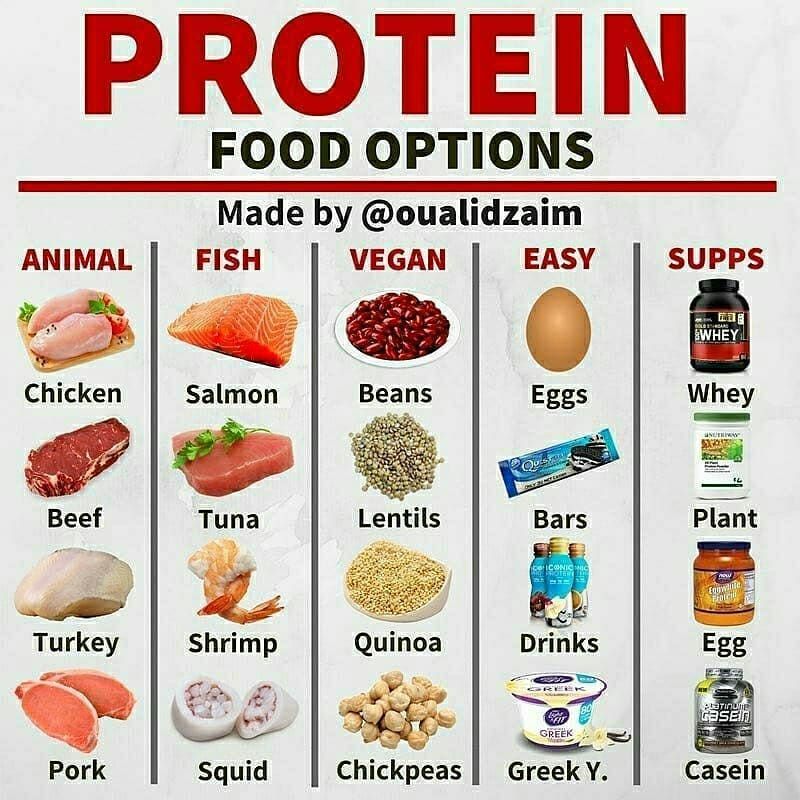 known. A complete list of products can be found here.
known. A complete list of products can be found here.
As a result, most of the partners of Senomyx have disowned cooperation with the company, announcing that they are updating their products. The Senomyx website has not been updated since 2012. How things are today with the testing of flavoring additives in the US and in the world is not known for certain.
Cells grow in bioreactors with a volume of several thousand liters Cultivation of cells in a bioreactor. Photo from process-worldwide.com
In medicine and pharmacology, embryonic cell lines are currently used to create vaccines (vector or live) against measles, rubella, mumps, hepatitis A, rabies, chicken pox, and coronavirus. Human cell lines are needed to propagate the virus, which is then used in the vaccine. After all, viruses, unlike bacteria, need a "host", and the cells of the cell line become this "host".
They are also used to develop drugs for rheumatoid arthritis, hemophilia and cystic fibrosis. In addition, the HEK-293 line is being used in research into cancer therapies. An adeno-associated virus is also grown on it, which serves as a vector for gene delivery in the Zolgensma drug, which is used in the treatment of spinal muscular atrophy.
In addition, the HEK-293 line is being used in research into cancer therapies. An adeno-associated virus is also grown on it, which serves as a vector for gene delivery in the Zolgensma drug, which is used in the treatment of spinal muscular atrophy.
Embryonic cells can indeed divide almost indefinitely under the conditions created for this in laboratories. Supporters of this method, as an argument justifying the use of abortive material, say that the cell cultures that are used today are the result of a long division and are no longer actually part of the body of the once aborted child.
Obtaining a cell line is as follows. The tissue or organ from whose cells a cell line is to be developed in the future is taken under aseptic conditions, placed in a sterile saline solution and transported to a specialized laboratory.
Tissues and organs are carefully examined in the laboratory, including for possible infection. If it is established that they are “clean”, they are crushed with a scalpel or scissors to pieces no larger than 1-3 mm in size, thoroughly washed from blood cells in several changes of sterile solutions, and then placed in solutions of special enzymes that allow isolating individual cells.
Actually, these very cells that can be isolated by grinding (sometimes this may even require a kind of “sieve” through which the solution obtained from tissues or organs is filtered) is the primary cell culture. It can be started to "grow" with the help of a nutrient medium and a number of special technologies.
Most cell cultures grow in what is called a monolayer, that is, at the bottom of a plastic or glass container, in a one-cell-thick layer. In order for them to multiply faster and more efficiently, special multi-storey containers were invented. (This is how it looks like for example.)
Some types of cells require constant agitation - "shakers" have been invented for them, which shake the vessels with the cells. For example, in Italy, 28 thousand special roller bottles are used simultaneously to create vaccines in the factory. Automation at the same time controls the temperature and speed of rotation. And when the factory replaced smooth glass vials with corrugated plastic vials, increasing the surface area, they received a twenty-fold increase in cells, and doubling the cell population occurs in just over 8 hours.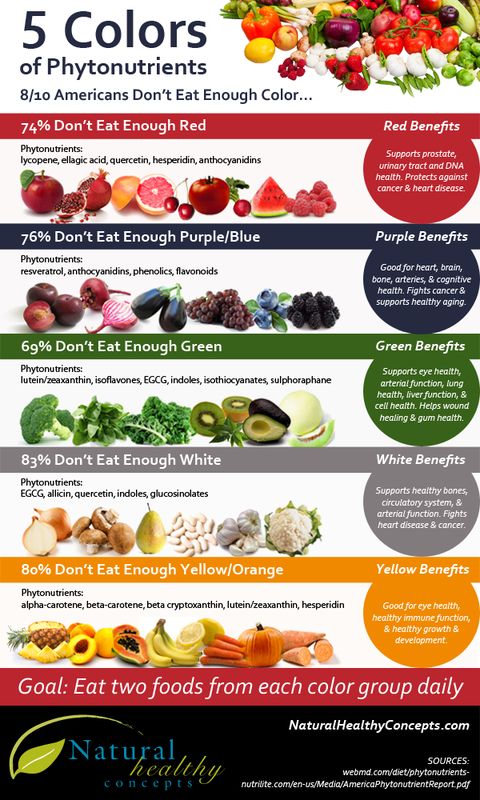
But the technology that works best is when cells multiply in suspension in a special bioreactor. Such reactors with a capacity of up to 8,000 liters operate in Europe and the United States.
In this case, the actual cells of the embryonic line should not get into the final product (grafting).
When the virus multiplies in sufficient quantity, it is separated from the cell culture by various means and purified from impurities. To do this, different methods can be used - electrophoresis, various chemicals, staining, and even multi-level filtration. The resulting pure virus or its fragments are added to the vaccine along with other substances that will ensure its preservation, stability and, in the future, the necessary effect on the body.
If not used for production, then used for testing Roller bioreactor for cell culture cultivation: A - scheme, B - roller culture system. Image from en.ppt-online.org
Some vaccines, however, use animal cells such as monkeys, rabbits, hamsters, and chicken embryos in eggs. But still, virologists believe that human cell cultures are the most advanced of the laboratory systems for cultivating viruses, and then testing their effectiveness. The use of human cells, in contrast to the material taken from animals, gives greater safety of vaccination, as it guarantees that the immune system does not react to the material of another biological species. The technology is cheap, which is why it is used almost everywhere.
But still, virologists believe that human cell cultures are the most advanced of the laboratory systems for cultivating viruses, and then testing their effectiveness. The use of human cells, in contrast to the material taken from animals, gives greater safety of vaccination, as it guarantees that the immune system does not react to the material of another biological species. The technology is cheap, which is why it is used almost everywhere.
In the case of the latest coronavirus vaccines, it is already known that embryonic cell lines were used in the development of at least Pfizer and Moderna RNA vaccines at the stage of laboratory testing. The connection with the cell lines that appeared as a result of abortions is in the Russian vaccine "Sputnik-V" of the Institute. Gamaleya and preparations of the companies NOVAVAXAB and INOVIO, which are in the stage of clinical trials. Such data was published at the end of 2020 by the American Charlotte Losier Institute, an organization that takes a pro-life position, collects and publishes information regarding abortion and the use of abortive material for medical, scientific and other purposes.
AstraZeneca's coronavirus vaccine uses a chimpanzee adenovirus rather than a human adenovirus as a vector. However, according to data published in the journal Nature, the HEK293 cell line was used in the development of the vaccine.
Curiously, a vaccinologist from the University of Auckland, chair of the WHO Global Advisory Committee on Vaccine Safety Helen Petousis-Harris lines, if not for production, then at least for testing.
“When studying viruses and immune responses in the laboratory, these cell lines are inevitably used to provide reliable results that are relevant to humans,” says Petousis-Harris.
Since only Sputnik-V is currently available in Russia from this list, it is worth telling a little more about it. This is a vector vaccine created on a previously developed and tested one at the N.N. Gamaleya adenovirus platform. This means that the vaccine is based on a vector, a genetically modified virus, into which the genes for the proteins of the outer shell of the SARS-CoV-2 virus are inserted. The vector delivers a fragment of the coronavirus genome into the cell, triggering an immune response.
The vector delivers a fragment of the coronavirus genome into the cell, triggering an immune response.
The Russian vaccine uses adenoviruses as a vector. It is adenoviruses that need to be grown on the HEK293 embryonic cell line, so the Sputnik-V vaccine from this point of view can be considered a drug with an ethically controversial component.
The vaccine of the Russian company "Vector", "EpiVakKorona", consists of artificially synthesized short fragments of viral proteins - peptides recognized by the immune system. It does not seem to involve working with cell lines, at least not for production. (The patent has not yet been published, so there is no exact data.) Regarding the third Russian vaccine, which is still being worked on at the Center. Chumakov, no data yet.
Unethical cell lines can be replaced, but few people are interested in this Amniocentesis procedure. Photo from the site https://gravimed.com.ua/
Supporters of the use of embryonic cell lines in medicine and pharmacology assure that the cell lines obtained decades ago are enough to meet the needs of the entire industry, and situations in which new abortions would be needed in research or, moreover, for commercial purposes, are impossible.
Donald Trump tried to limit the use of new abortion materials
Proponents of the use of embryonic cell lines often argue that the studies that take place with these cells do not require new abortions. However, abortive material continues to be used in one way or another for scientific purposes. It is known that such works are being carried out in Great Britain, India, China, and Singapore. In Russia, the leader in this kind of activity is Professor Gennady Sukhikh, who heads the Federal State Budgetary Institution “N. IN AND. Kulakov” and is considered the author of the so-called “fetal therapy”, during which abortive tissues are used.
In 2019, US President Donald Trump made an attempt to limit the use of tissue obtained from elective abortions for scientific purposes. At that time, his administration effectively blocked scientists from the National Institutes of Health from obtaining any fetal tissue for further research. Funding for this kind of research has also been substantially reduced.
In addition, a so-called Human Fetal Tissue Research Ethics Advisory Board has emerged in the United States, which over the past two years has issued approval only for studies that involve the search for alternative methods in order to completely move away from the use of abortion waste in the future.
On the eve of Joe Biden's inauguration, he was approached by representatives of the American scientific community with a request to lift the moratorium established by his predecessor. In their letter, scientists refer, among other things, to the fact that this will allegedly speed up research to find a cure for covid.
Deb Wombold , a Merck representative, gave a partial answer to the question of why the world's pharmaceutical industry is not switching to ethical vaccines without the use of embryonic cells. She explained that in the case of the measles, mumps and rubella vaccine, switching from the WI-38 line to another cell line (eg animal) is a major challenge, both in terms of efficacy and quality of the vaccine.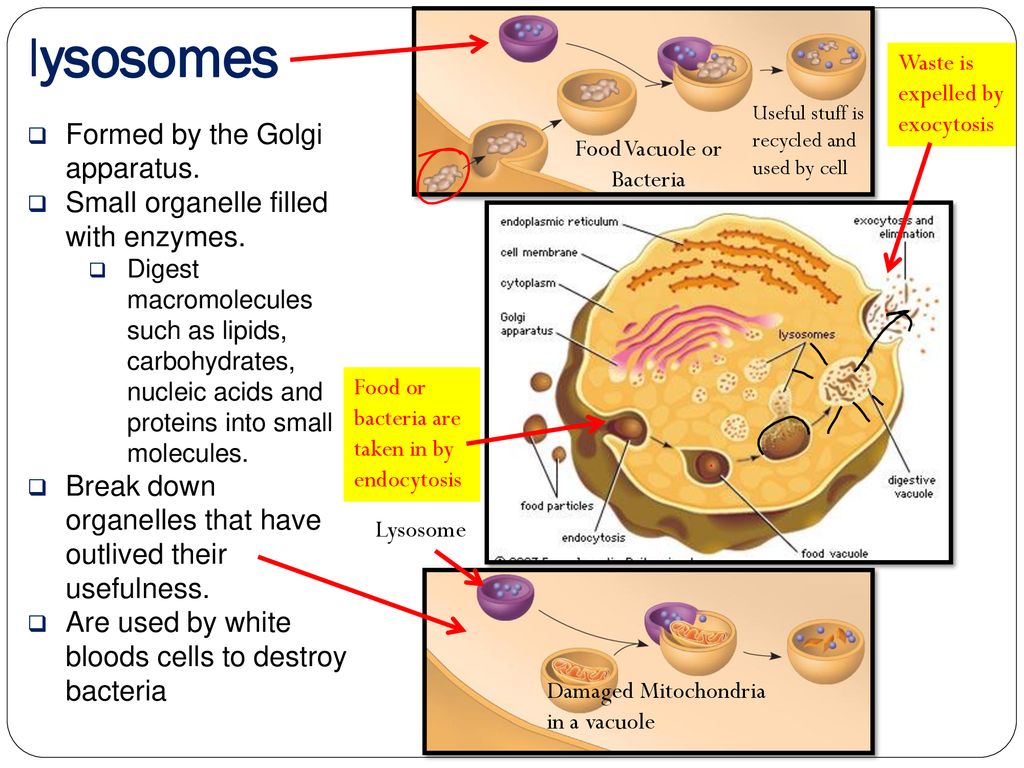
“Because the process of vaccine development is so dependent on the particular cell line in which it occurs, it is not possible to simply replace one line with another. And even if it succeeded, there is no guarantee that the level of safety and effectiveness would be comparable to already licensed vaccines,” says Ms. Wombold.
Attempts to find an alternative are still rather in the theoretical field.
Tak, Ph.D. embryonic cells obtained as a result of a miscarriage.
David Prentice , vice president of the Charlotte Losier Institute, suggests creating cell lines based on cells obtained from amniocentesis, a procedure for collecting amniotic fluid from a pregnant woman.
But here again the main argument comes into play: existing embryonic cell lines are cheap, while new technologies will take time to develop, study and implement. Not everyone is ready for this.
Ethical technologies need to be developed Photo: invest.
 mosreg.ru
mosreg.ru The question of the ethics of vaccines and their connection with abortive materials has been raised more than once by representatives of different faiths.
In December 2020, the Vatican stated that “in the absence of an alternative, the use of vaccines produced using cell lines from aborted embryos is morally acceptable, and it should be borne in mind that the refusal to vaccinate due to the rejection of such vaccines “may increase risks for public health".
The official position of the Russian Orthodox Church on the use of vaccines against coronavirus, which are somehow associated with embryonic cell lines, is not yet available. It is known that the relevant requests were sent to all developers of Russian vaccines, and representatives of the Institute. The Gamaleyas confirmed they were using the HEK29 cell line3 for the cultivation of adenovirus, but at the same time they emphasized that there are no abortive cells in the final product, and the creators of EpiVacCorona hastened to assure that their vaccine is as ethical as possible.
At the present time the Church, in resolving this issue, refers to two documents. First of all, it is "Fundamentals of the Social Concept", which says: "Condemning abortion as a mortal sin, the Church cannot find justification for it even if someone may receive health benefits from the destruction of a conceived human life."
On the other hand, in 2009, when a similar controversy broke out over measles vaccination, the Russian Society of Orthodox Doctors issued a statement acknowledging the temporary use of vaccines that use abortive material in their development, but saying the following: “At the same time, we consider it necessary to speak strongly in favor of the use of alternative (ethical) vaccines, when available. It is also necessary to press the Government of Russia, the Ministry of Health and Social Development, as well as the pharmaceutical industry to create domestic alternative (ethical) vaccines or purchase them in countries that produce them.”
Plant-based ethical vaccines of the future? Photo: mali maeder/Pexels
From the above, we can conclude that the key point in the problem of using abortive materials in the creation of vaccines is precisely the request for ethical products.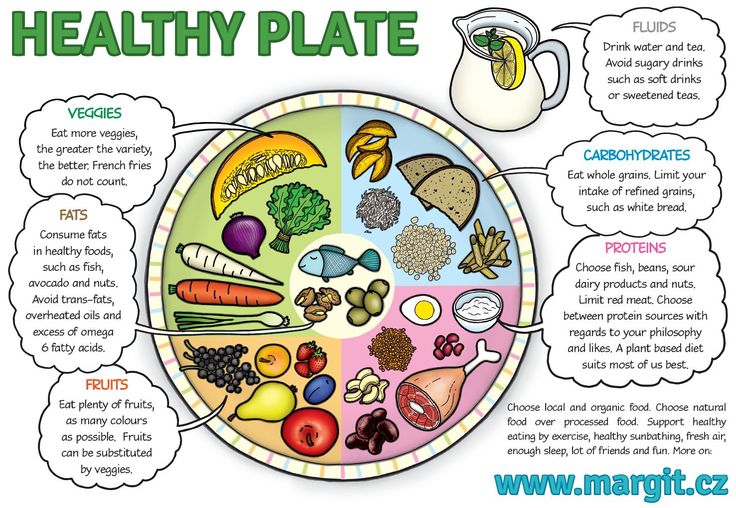 It seems that until it is sufficiently formulated and voiced by various organizations, groups and individual opinion leaders, things will not get off the ground.
It seems that until it is sufficiently formulated and voiced by various organizations, groups and individual opinion leaders, things will not get off the ground.
And yet, there is hope, such works are gradually appearing. An example of this is the so-called "vegetable" vaccine, which scientists from the Biological Faculty of Moscow State University are working on.
It uses tobacco mosaic virus as an adjuvant - a substance that facilitates the delivery and correct expression of certain antigens during vaccination. Tobacco is infected with a virus, then it is isolated from plants, subjected to heat treatment, and it becomes spherical from a rod. Added to this spherical particle are fragments of the COVID-19 pathogen protein, which, due to the properties of the plant virus, attach perfectly to it, so that no additional chemical agents need to be used for this.
Professor Alexei Agranovsky, Head of the Virology Department of the Biological Faculty of Moscow State University, assured Miloserdiye. ru that embryonic cell lines, as well as animal cells, are not used at the stage of vaccine design. In the future, at the testing stage, there will be experiments on laboratory animals, but in general it can be said that this vaccine will become ethically acceptable.
ru that embryonic cell lines, as well as animal cells, are not used at the stage of vaccine design. In the future, at the testing stage, there will be experiments on laboratory animals, but in general it can be said that this vaccine will become ethically acceptable.
By the way, MSU has already developed a vaccine against rubella using a similar technology, and it proved to be safe in animal tests. There are a number of other vaccine candidates that are being worked on.
“These studies are of fundamental importance for theoretical science, because the more we know, the more armed we are. You never know what epidemics will be in the future - you need to be able to use different platforms, ”says the scientist.
“Having another vaccine, even when there are already several options, is good,” explains Aleksey Agranovsky. “And not just because people should have a choice. For example, Sputnik-V can be vaccinated once, and if there is a need for revaccination, there is a risk that it will be ineffective. ”
”
Cell Culture, Vaccine Ethics - Indicator
Some members of religious communities reject the coronavirus vaccine, blaming it for being made with porcine gelatin, which would make it haram, non-kosher, and not Lent-compliant. The Council of Ulema (experts on Islam) in the UAE reassured Muslims, calling for any vaccine against COVD-19 to be considered halal, regardless of its composition. The Pope agreed that since there is no choice, then we must take what they give. Israel seems to be coping as well, leading the world in terms of the percentage of the vaccinated population. As Western companies (and after them domestic ones) assured, the vaccines do not contain pork components. But the problems of coronavirus vaccines did not end there, because vaccine manufacturers were convicted of using aborted material - the HEK29 cell line.3. This information shocked many: is it really necessary to destroy others to save some lives? The answer to this question is not so simple.
Cannibalism, vaccines and chocolates
According to the Fundamentals of the Social Concept document, which the ROC adheres to, "any use of abortive tissues, including for the production of vaccinations, cannot be justified from a moral point of view. " However, the manufacturers of the Sputnik-V vaccine admitted that the HEK 29 line was used to manufacture the components.3 (Human embryonic kidney 293 cells), obtained from the kidneys of an aborted human embryo. “We have a line that was isolated from human cells in 1973. <...> In order to produce adenoviral particles, these cells are grown,” said Vladimir Gushchin, head of the laboratory of mechanisms of population variability of pathogenic microorganisms at the Gamaleya National Research Center for Epidemiology and Microbiology.
" However, the manufacturers of the Sputnik-V vaccine admitted that the HEK 29 line was used to manufacture the components.3 (Human embryonic kidney 293 cells), obtained from the kidneys of an aborted human embryo. “We have a line that was isolated from human cells in 1973. <...> In order to produce adenoviral particles, these cells are grown,” said Vladimir Gushchin, head of the laboratory of mechanisms of population variability of pathogenic microorganisms at the Gamaleya National Research Center for Epidemiology and Microbiology.
Same story with other vaccines. For example, the HEK 29 line is also used to propagate adenovector carrier viruses (like our Sputnik-V) from AstraZeneca3, and the Janssen and Johnson & Johnson vaccine uses PER.C6. There is no “humanity” in the preparation itself: thanks to buffer washing systems and chromatographic purification, even excess proteins, let alone cells, do not remain in the preparation. But after this information, many people have a residue: cannibalism is seriously discussed on the Internet, despite Academician Gunzburg’s direct answer that no one kills unborn babies for coronavirus vaccines.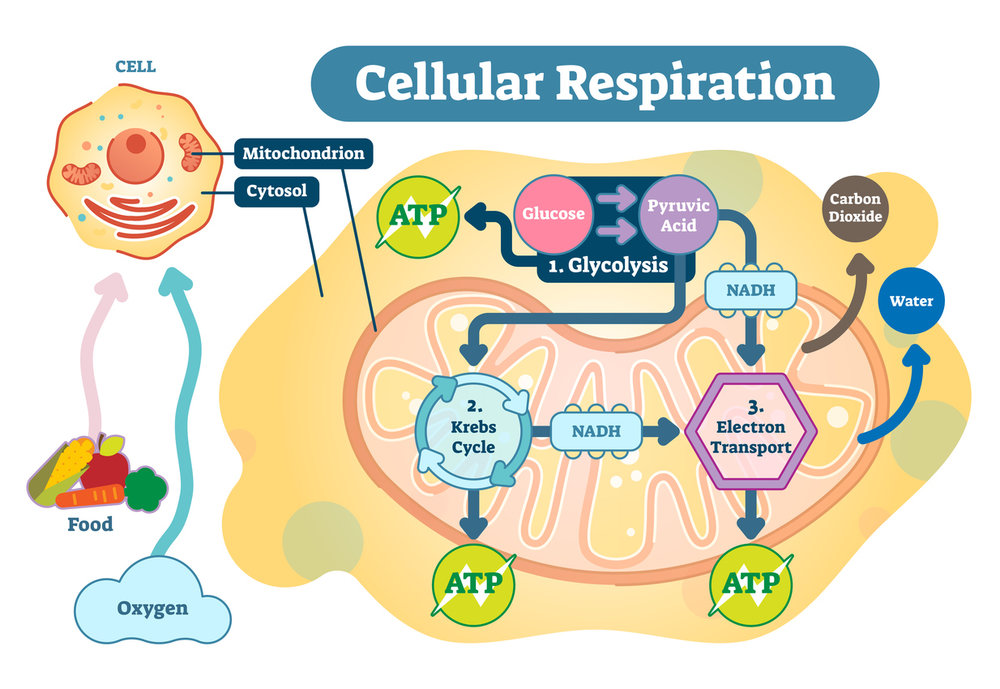 For this purpose, cells were taken once from an already aborted fetus, sometimes more than half a century ago. At the same time, abortions were carried out not specifically to obtain cells, but for medical reasons or at the request of the mother. The main criteria for a cell line are one type, one source, and the ability to divide outside the body. Descendants-clones of those cells that have been kept and bred for decades in a test tube, under laboratory conditions, are now being used.
For this purpose, cells were taken once from an already aborted fetus, sometimes more than half a century ago. At the same time, abortions were carried out not specifically to obtain cells, but for medical reasons or at the request of the mother. The main criteria for a cell line are one type, one source, and the ability to divide outside the body. Descendants-clones of those cells that have been kept and bred for decades in a test tube, under laboratory conditions, are now being used.
No one will forbid you to refuse vaccines if it contradicts some beliefs. But keep in mind that the same HEK 293 line is used to test nutritional supplements and all sorts of other products. For example, Senomyx has patented more than 100 products where the embryonic cell line was used in the testing phase. And now such corporations as Nestle, Heinz, Pepsi put these additives in instant soups, kinders and other chocolates, ketchups, cream, chips, bouillon cubes and so on. Those interested can read a growing list of all such products, cosmetics and medicines from the American pro-life organization Children of God for life. “Cells were forced to produce a sweetness receptor protein. The sweeter the substance that was added to the cells, the more calcium appeared in the cell. And it can be measured. The approach is no more complicated than those used to test future drugs. Why HEK239? An alternative would be receptor cells from the mouth. But to obtain cell lines from them is long, expensive and very difficult. It was much more convenient to take a cell line that is easy to grow and easy to modify. When you need to test hundreds of thousands of molecules, there is no better approach. After testing with candidate substances, they already worked with quite ordinary methods of food chemistry, ”says molecular biologist Ekaterina Gracheva.
“Cells were forced to produce a sweetness receptor protein. The sweeter the substance that was added to the cells, the more calcium appeared in the cell. And it can be measured. The approach is no more complicated than those used to test future drugs. Why HEK239? An alternative would be receptor cells from the mouth. But to obtain cell lines from them is long, expensive and very difficult. It was much more convenient to take a cell line that is easy to grow and easy to modify. When you need to test hundreds of thousands of molecules, there is no better approach. After testing with candidate substances, they already worked with quite ordinary methods of food chemistry, ”says molecular biologist Ekaterina Gracheva.
The choice here is small. You can stop eating everything that you didn’t grow yourself in the garden, refuse drugs (which are always studied on cell lines, then on animals, and only then are they tested on humans). Another option is to achieve the abolition of embryonic and human cell cultures, and instead test drugs directly on animals, and even on humans. But without preliminary selection on the cells of the participants in such experiments, it will take hundreds of thousands of times more to develop each drug. Then most of them will die, and the cost of each product and medicine will increase tremendously, which will cause even greater victims, because no one can afford such expensive drugs and food.
Embryonic cells everywhere
The Russian collection of vertebrate cell cultures alone contains about 50 varieties of human cell lines. Most of them are derived from cancerous tumors. From the embryos here are lung cells (WI-38 VA 13 subline 2RA, as well as FLECH and LECH under different numbers), and musculoskeletal tissue (ChEF 392/1, M-FetMSC), and bone marrow (FetMSC), and kidneys (PECh693/30), and embryonic stem cells (SC5). There is even a line of FRSN, which was obtained from the foreskin of a child. And this is only a part of the All-Union (Russian) collection of cell cultures, founded in 1978, which includes both animal cells and cells of higher plants, and genetically transformed cells of plant roots. But human cells are very different from them, so they are required in drug trials and other products.
Embryonic cell lines are widely used in research, drug testing and nutritional supplement testing. Thus, the WI-38 line is diploid (with a double set of chromosomes) fibroblast cells. Its source was a sample of lung connective tissue from a three-month-old female embryo. It developed and tested vaccines for many viruses, primarily against rubella. PER.C6, which was received at 1985 from retinal cells of an 18-week-old embryo, it is used to develop and manufacture vaccines, gene therapy products, antibodies against rheumatoid arthritis and multiple sclerosis, and various drug proteins. Now at the stage of clinical trials - vaccines against rabies, HIV, malaria and tuberculosis. The MRC-5 line, which was isolated in 1966 from the lungs of a 14-week-old boy, was named after the Medical Research Council. The abortion in this case took place in England at 1966 "for psychiatric reasons. "
Why are embryonic and other human cell lines so good? They can be used to test the toxicity of drugs to humans, they are diluted with human viruses to make neutralized carrier platforms for vaccines. To use a whole person for such purposes, you see, would be even less ethical. At the same time, it is very difficult to grow human cells in the laboratory, and many attempts ended in failure, until scientists got the idea to use the “youngest” ones obtained from embryos. As a result, as of 2020, only for HEK 29 cells3 more than 58 thousand scientific publications appeared. “When studying viruses and immune responses in the laboratory, these cell lines are inevitably used to provide reliable results that are relevant to humans,” said Helen Petousis-Harris, chair of the WHO Global Advisory Committee on Vaccine Safety.
Frequently used cell lines are chosen because they are cheap and easy to breed in the laboratory. Thus, WI-38 cells multiply quickly and easily and survive about 50 divisions, each of which takes about a day. By the way, they were identified by Leonard Hayflick, a scientist who discovered the very Hayflick limit, that is, a limit on the number of divisions that a cell can survive. In addition, WI-38 and some embryonic cultures tolerate freezing well, which means they are easy to transport.
And that's not to mention stem cells of embryonic origin. The fact is that embryonic stem cells in the early stages exist in a pluripotent state, when they have not yet decided what kind of tissue they will turn into. Until these cells begin to differentiate into three germ layers from which different types of tissues will develop, they have more than 200 variants and are like kindergarten children who can learn any profession. In an adult organism, the circle of choice even for stem cells narrows: if a child at school for 11 years is only interested in languages and literature, then it is unlikely that he will be able to enter the chemical, medical or engineering faculty. So, the potential of embryonic stem cells is theoretically unlimited: one can learn from them how to grow tissues and organs for transplantation. Now biologists and doctors are trying hard to figure out how to do this.
“Embryonic stem cell research is associated with something controversial. The key word “abortion” immediately comes to mind. But these cells are obtained not only from abortive material, but also from in vitro fertilization programs, which are popularly called "test-tube babies." Formally, this is a failed life, extra cells left over from the program. It is around them that the world's largest ethical discussion unfolds. And when it comes to the use of fetal cells obtained from the remnants of abortive tissue, there are much fewer ethical problems in the Western world,” says Academician of the Russian Academy of Sciences, Doctor of Medical Sciences Gennady Sukhikh.
“Is it ethical to flush priceless material down the drain?”
Does this mean that the use of cell cultures is absolutely ethical? The short and simplistic answer to this question would be "not really". The fact is that in the years when samples of many cell cultures that exist today were taken, the legislation did not regulate this issue practically in any way. For example, we know that both WI-38 and HEK 293 are derived from legal abortions where the pregnancy was terminated artificially at the request of the mother: the first occurred in Sweden at 1962, the second in the Netherlands in 1973. But these women did not give consent to the further use of cells. According to the rules, the aborted fetuses had to be destroyed, and the mothers in both cases did not even know that the cells of their unborn children had gained a second life. Doctors contacted one of them only many years later.
However, this did not happen through the fault of evil geniuses: then there was no legal basis for registering a cell line on your own, not to mention the possibility of registering living tissue as property and protecting the rights of the person to whom it belongs. A similar fate befell the progenitor of the "immortal" HeLa cell line, Henrietta Lacks, who died in poverty. Her family did not know for many years that women affected by cervical cancer cells gained the ability to divide forever (by the way, this is one of the reasons why cancer cell lines are so valuable), and therefore they have done a great service to science.
However, today the situation has changed, and it is illegal to use your cells or the cells of an embryo received from you without a written voluntary consent. If any individual physicians or scientists act in this way, the community will not approve of them. In Russia, this area is regulated by the Federal Law “On Biomedical Cell Products”, which generally prohibits the use of biomaterial obtained from human embryos or fetuses for the production of biomedical cell products. The rules for posthumous donation are also spelled out there, and the sale and purchase of biological material from a donor is prohibited.
The future goals of many spiritual leaders are the development and use of less controversial cell lines - not from embryonic sources, but simply derived from humans, or even from animals or plants. One could also use cells from miscarriages rather than abortions. So far, there are no such options for many vaccines and drugs. Meanwhile, the number of lives saved by WI-38 vaccines alone against polio, rubella, mumps, measles, adenovirus, rabies, hepatitis A and herpes is estimated at 10.




